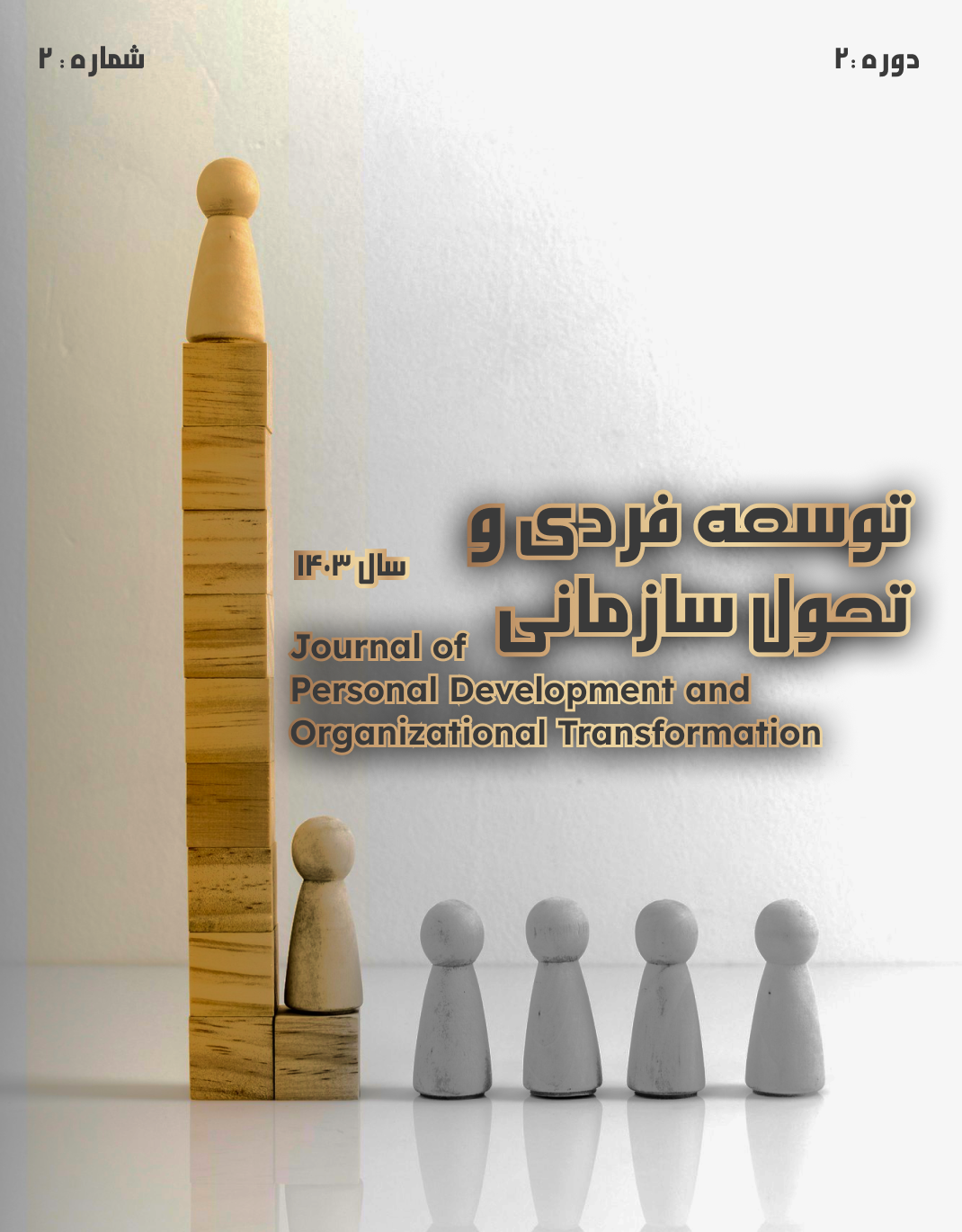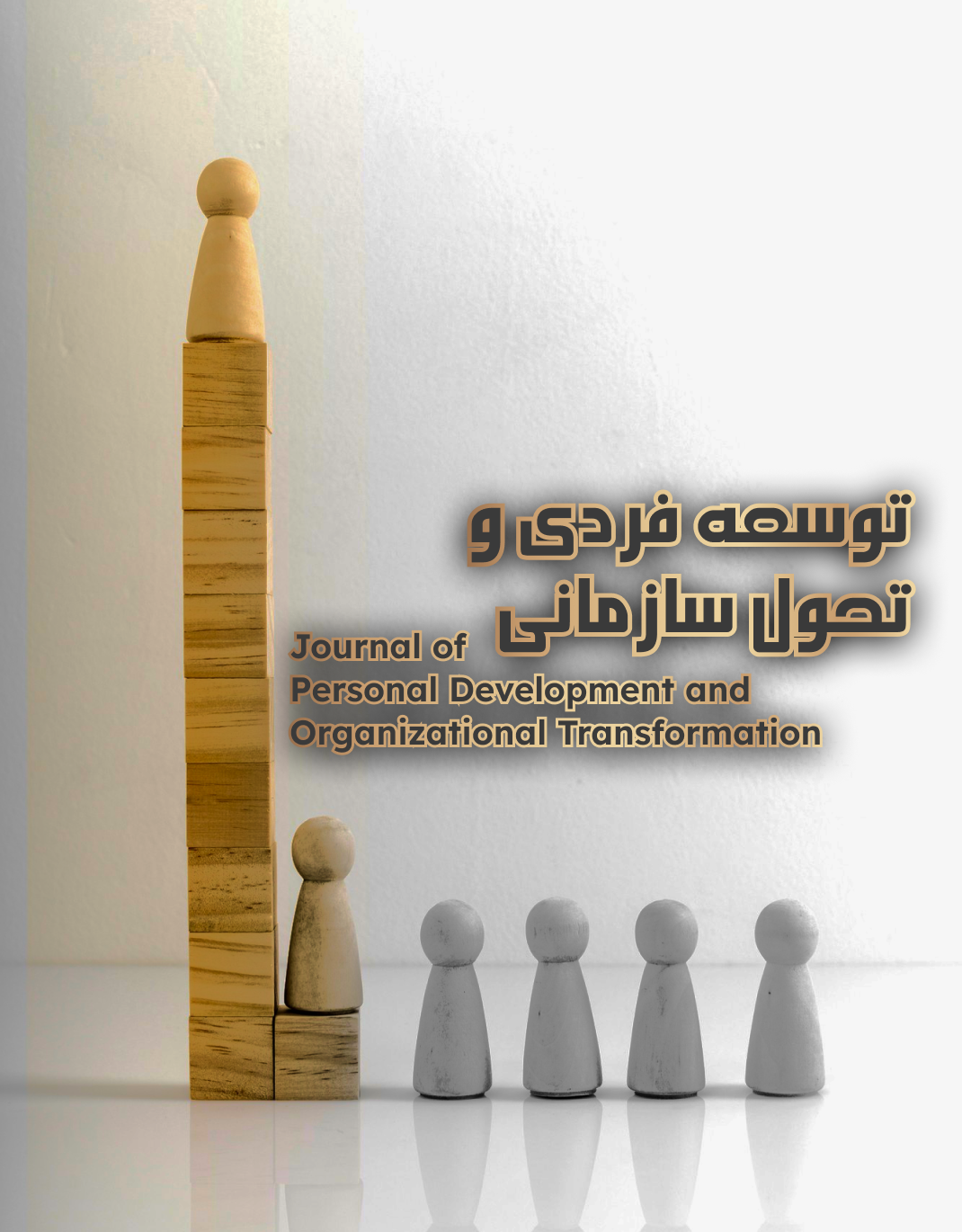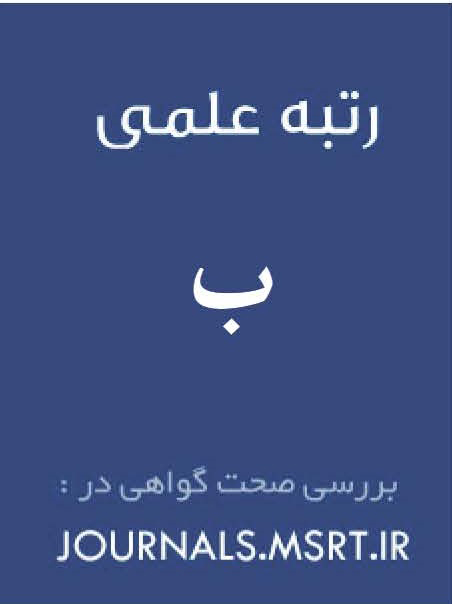طراحی مدل حکمرانی شبکهای در وزارت تعاون،کار و رفاه اجتماعی
کلمات کلیدی:
کار و رفاه اجتماعی, وزارت تعاون, حکرانی شبکه ایچکیده
پژوهش حاضر باهدف طراحی مدل حکمرانی شبکهای در وزارت تعاون،کار و رفاه اجتماعی انجام شد. مشارکتکنندگان این پژوهش، مدیران وزارت تعاون،کار و رفاه اجتماعی بودند. نمونهگیری با مشارکت 20 نفر از صاحبنظران و خبرگان صورت گرفت. ابزار جمعآوری دادهها مصاحبه نیمه ساختاریافته در بخش میدانی بود که مصاحبه نیمه ساختاریافته با مشارکتکنندگان تا مرحله اشباع نظری ادامه یافت. برای تجزیهوتحلیل دادههای کیفی از روش تحلیل مضمون براساس الگوی آتراید-استرلینگ استفاده شد. به منظور سنجش پایایی از ضریب هولستی، ضریب پی اسکات، شاخص کاپای کوهن و آلفای کرپیندروف استفاده گردید که مورد تائید قرار گرفت. در قسمت تحلیل مضمون از نرم افزار ATLASTI استفاده شده است. نتایج حاصل از تحلیل عاملی نشان میدهد که از میان 63 مضمون اولیه موجود، 63 مضمون سازنده قابل شناسایی است و 8 دسته مضمون فراگیر به دست آمده است. براساس تحلیل مضمون 8 مضمون سازنده سطح دو شناسایی شده عبارتند از مشارکت چندسطحی ذینفعان، همآفرینی و مشارکت فعال، حکمرانی مبتنی بر شفافیت و پاسخگویی، چابکی و انعطافپذیری سازمانی، تمرکز بر نوآوری و یادگیری سازمانی، رهبری مشارکتی و توسعه ظرفیتها، استفاده از فناوریهای نوین و توجه به عدالت و توسعه پایدار. در مجموع، طراحی مدل حکمرانی شبکهای در وزارت تعاون، کار و رفاه اجتماعی بر اساس تکنیک تحلیل مضمون، میتواند به ایجاد یک ساختار حکمرانی کارآمد و پویا در این وزارتخانه منجر شود. این مدل با تأکید بر مشارکت ذینفعان، شفافیت، نوآوری، چابکی سازمانی و عدالت اجتماعی، میتواند به بهبود عملکرد وزارتخانه در ارائه خدمات اجتماعی، ایجاد اشتغال و حمایت از اقشار مختلف جامعه کمک کند و در نهایت، به پیشبرد اهداف کلان کشور در حوزه رفاه اجتماعی و اقتصادی بپردازد.
دانلودها
مراجع
Alikhani, R., Ali Ahmadi, A., & Rasouli, M. R. (2019). Behavioral Factors Affecting the Design of a Network Governance Model in the Health Care Sector: A Qualitative Systematic Review. Management Strategies in Health System, 4(1), 67-84. https://doi.org/10.18502/mshsj.v4i1.1097
Alizadeh, H., Nazarpour Kashan, H., & Jalali, F. (2023). Evaluation of consumer behavior prediction based on artificial intelligence in marketing. The 15th National Conference on Management and Human Sciences Research in Iran, https://civilica.com/doc/1815725/
Arrondo, R., Carcaba, A., & Gonzalez, E. (2022). Does good local governance improve subjective well-being? European Research on Management and Business Economics, 28(2), 180-192. https://doi.org/10.1016/j.iedeen.2021.100192
Azeredo, G., Burcharth, A., & Wegner, D. (2024). The Impact of Governance Tensions on Disaffiliation from Interorganizational Networks. Administrative Sciences, 14(6), 113. https://doi.org/10.3390/admsci14060113
Bert, G., Andersen, L. B., Hall, J. L., & Pandey, S. K. (2023). Writing impactful reviews to rejuvenate public administration: A framework and recommendations. Public Administration Review, 83(6), 1517-1527. https://doi.org/10.1111/puar.13756
Berthod, O., & Segato, F. (2019). Developing Purpose-Oriented Networks: A Process View. Perspectives on Public Management and Governance, 2(3), 203-212. https://doi.org/10.1093/ppmgov/gvz008
Chien, N. B., & Thanh, N. N. (2022). The impact of good governance on the people's satisfaction with public administrative services in Vietnam. Administrative Sciences, 12(1), 35-47. https://doi.org/10.3390/admsci12010035
Clauss, T., & Ritala, P. (2023). Network governance institutionalization: Creating mutual value by harnessing and avoiding conflicts in interorganizational networks. Journal of Business Research, 163. https://doi.org/10.1016/j.jbusres.2023.113880
Daghati, A., Yaghoubi, N. M., Kamalian, A. R., & Dehghani, M. (2019). A Model of Phased Network Governance Development Using a Meta-Synthesis Approach. Public Management, 11(2), 203-230. https://www.sid.ir/paper/514800/fa
Ganjipour, S. R., Hadi Peykani, M., E'Tebarian, A., & Gholizadeh, A. (2021). A Model for Evaluating Educational Policies with a Network Governance Approach in Iran. New Approach in Educational Management, 12(5), 17-29. https://ensani.ir/fa/article/498049/
Ghanji, M., Khoshnoudifar, Z., & Rahimi Mosleh Abadi, P. (2022). Designing a Model of Organizational Well-being in the Ministry of Cooperatives, Labor and Social Welfare Using Grounded Theory Approach. Psychological Research in Management, 8(2), 115-133. https://sid.ir/paper/1043735/fa
Hasanzadeh, S. (2023). Investigating the Impact of Transparent Internal Communications on Organizational Change Management and Employee Relations in the Ministry of Cooperatives, Labor and Social Welfare. Journal of Management and Accounting Inquiry, 3(1). https://www.noormags.ir/view/fa/articlepage/2029419/
Hashemi Zehi, N., Hashemi Zehi, S., & Mohammadi Beshagh, S. (2023). Document Analysis of the Activism of the Ministry of Cooperatives, Labor and Social Welfare During the Eight-Year Imposed War. Sociological Research, 1. https://journals.iau.ir/article_706219.html
Jalali Khanabadi, T., Alvani, S. M., Vaezi, R., & Ghorbanizadeh, V. (2020). Designing a Network Governance Model in the National Health System. Quarterly Journal of Iranian Management Sciences Association, 15(58), 1-30. http://journal.iams.ir/article_329.html?lang=en
Lotfi, B., Kharazi, Z., & Mozaffari, A. (2023). Presenting an Executive Model of Good Governance Based on Strategic Communications (A Study in the Ministry of Cooperatives, Labor and Social Welfare). Journal of Cooperation and Agriculture, 9, 73-89. https://www.sid.ir/paper/1164952/fa
Oord, S., Kenis, P., Raab, J., & Cambre, B. (2023). Modes of network governance revisited: Assessing their prevalence, promises, and limitations in the literature. Public Administration Review, 4. https://onlinelibrary.wiley.com/doi/10.1111/puar.13736
Papadopoulos, Y., Tortola, P. D., & Geyer, N. (2024). Taking stock of the multilevel governance research programme: a systematic literature review. Regional & Federal Studies, 1-33. https://doi.org/10.1080/13597566.2024.2334470
Sedgwick, D., Lemaire, R. H., Wirgau, J., & McKeague, L. K. (2022). Community Foundations as Network Conveners: Structuring Collective Agency for Child Education and Development System Impact. Journal of Public Administration Research and Theory, 32(2), 269-286. https://doi.org/10.1093/jopart/muab036
Siciliano, M. D., Carr, J. B., & Hugg, V. G. (2021). Analyzing the Effectiveness of Networks for Addressing Public Problems: Evidence from a Longitudinal Study. Public Administration Review, 81(5), 895-910. https://doi.org/10.1111/puar.13336
Spoladore, D., Geri, M., & Widmann, V. (2023). Strategic communication in a transnational project-the Interreg Alpine Space project HEALPS2. In Digital and Strategic Innovation for Alpine Health Tourism (Vol. 16, pp. 117-130). https://doi.org/10.1007/978-3-031-15457-7_8
Steelman, T., Nowell, B., Velez, A.-L., & Scott, R. (2021). Pathways of Representation in Network Governance: Evidence from Multi-Jurisdictional Disasters. Journal of Public Administration Research and Theory, 31(4), 723-739. https://doi.org/10.1093/jopart/muab004
van Duijn, S., Bannink, D., & Ybema, S. (2022). Working Toward Network Governance: Local Actors' Strategies for Navigating Tensions in Localized Health Care Governance. Administration & society, 54(4), 660-689. https://doi.org/10.1177/00953997211033818
Vantaggiato, F. P., & Lubell, M. (2022). Functional Differentiation in Governance Networks for Sea Level Rise Adaptation in the San Francisco Bay Area. Social Networks, 75, 16-28. https://doi.org/10.1016/j.socnet.2022.02.010
Wang, H., & Ran, B. (2022). Network governance and collaborative governance: a thematic analysis on their similarities, differences, and entanglements. Public Management. https://www.tandfonline.com/doi/full/10.1080/14719037.2021.2011389
Wang, H., Safer, D. L., Cosentino, M., Cooper, R., Van Susteren, L., Coren, E., & Sutton, S. (2023). Coping with eco-anxiety: An interdisciplinary perspective for collective learning and strategic communication. The Journal of Climate Change and Health, 9(4), 207-211. https://doi.org/10.1016/j.joclim.2023.100211
Yang, H., & Lemaire, R. H. (2022). Are Collaborative Challenges Barriers to Working Together?-A Multi-Level Multi-Case Network Analysis. International Public Management Journal, 1-20. https://colab.ws/articles/10.1080%2F10967494.2022.2067926
دانلود
چاپ شده
ارسال
بازنگری
پذیرش
شماره
نوع مقاله
مجوز
حق نشر 2024 توسعه فردی و تحول سازمانی

این پروژه تحت مجوز بین المللی Creative Commons Attribution-NonCommercial 4.0 می باشد.







